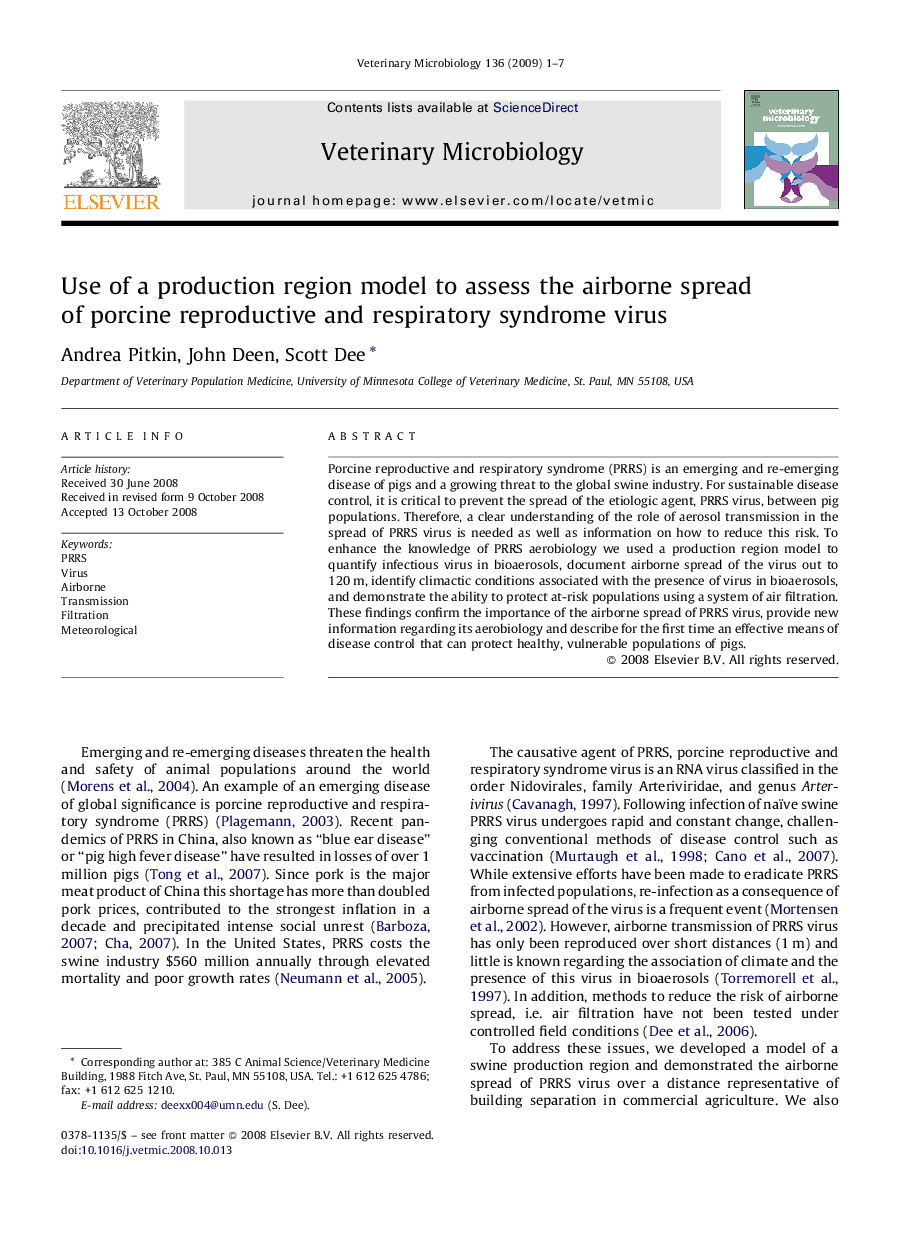| Article ID | Journal | Published Year | Pages | File Type |
|---|---|---|---|---|
| 2468181 | Veterinary Microbiology | 2009 | 7 Pages |
Porcine reproductive and respiratory syndrome (PRRS) is an emerging and re-emerging disease of pigs and a growing threat to the global swine industry. For sustainable disease control, it is critical to prevent the spread of the etiologic agent, PRRS virus, between pig populations. Therefore, a clear understanding of the role of aerosol transmission in the spread of PRRS virus is needed as well as information on how to reduce this risk. To enhance the knowledge of PRRS aerobiology we used a production region model to quantify infectious virus in bioaerosols, document airborne spread of the virus out to 120 m, identify climactic conditions associated with the presence of virus in bioaerosols, and demonstrate the ability to protect at-risk populations using a system of air filtration. These findings confirm the importance of the airborne spread of PRRS virus, provide new information regarding its aerobiology and describe for the first time an effective means of disease control that can protect healthy, vulnerable populations of pigs.
